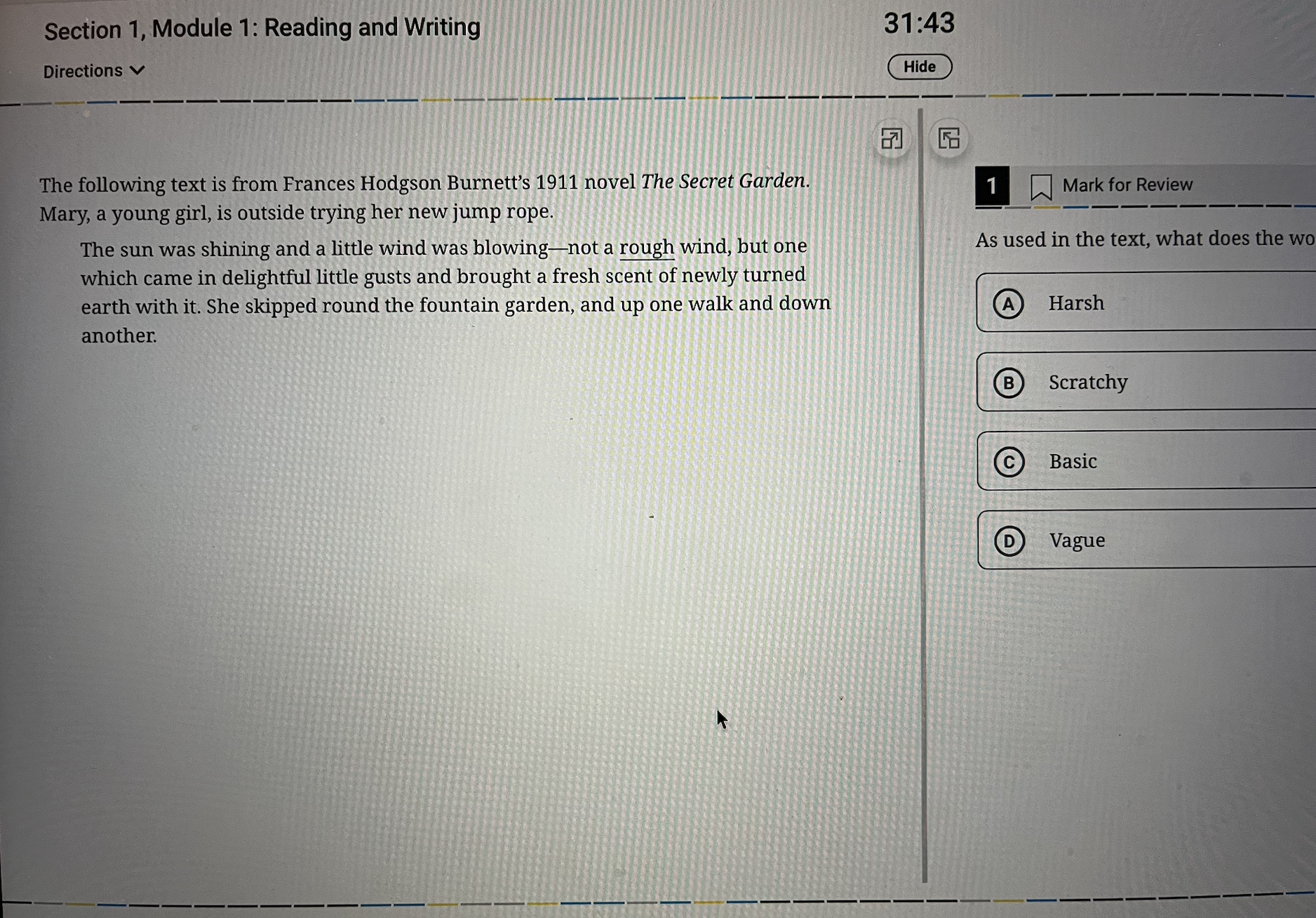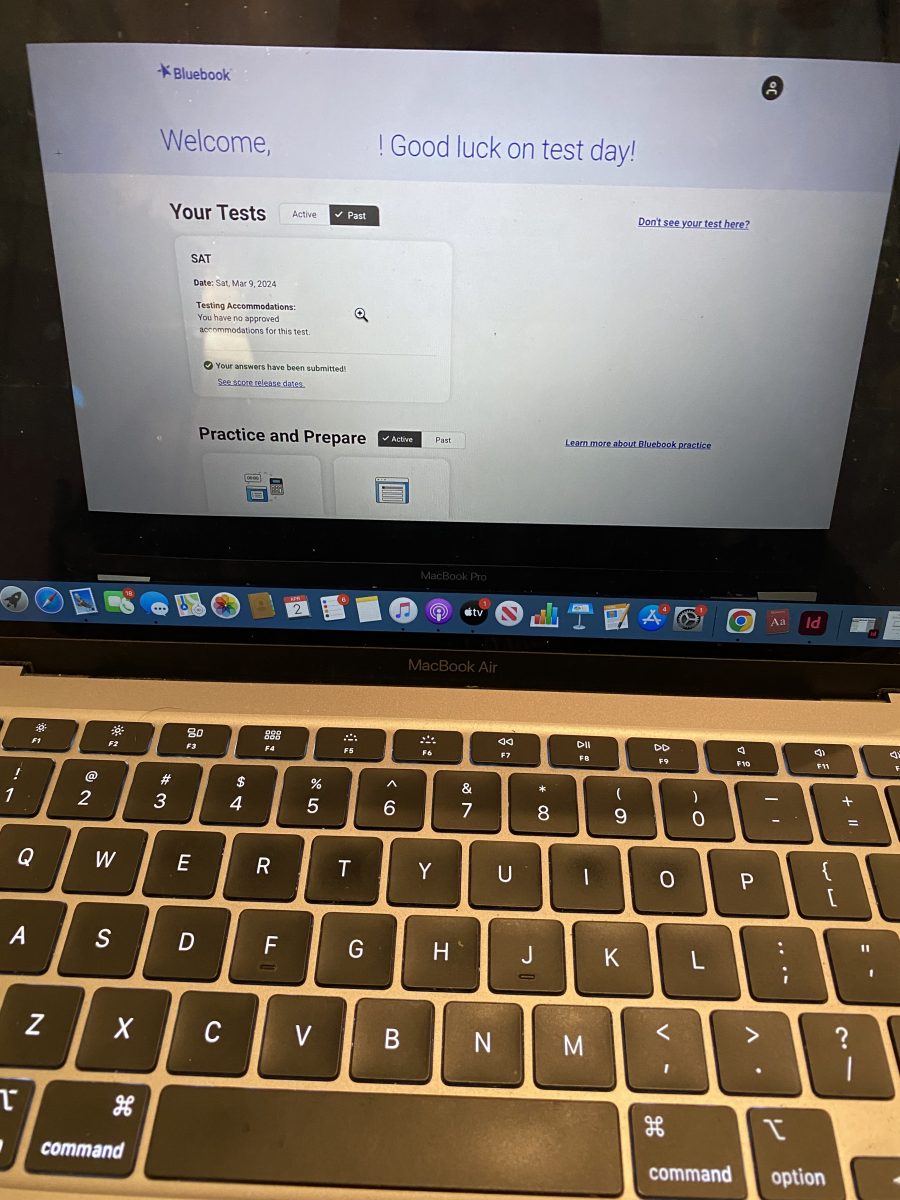The CollegeBoard is offering a Digital SAT, commonly known as the DSAT, starting March of 2024. Bernards High School administered its first digital version of this standardized test to ‘25 Juniors who took the digital PSAT on October 18th, 2023. While there have not been any significant changes to this newer version of the SAT, students planning to take the SAT starting next year should familiarize themselves with the newer version of the test.
The CollegeBoard has now combined the previous Evidence-Based Reading and Writing sections into one module called ‘Reading’ and the previous Math sections—no calculator and calculator—are combined into one module called ‘Math.’ This changes the format of the test, shortening it to two parts (modules) instead of four.
Each module has two parts. The DSAT, lasting approximately two hours and fifteen minutes, is significantly shorter than the paper SAT, which is over three hours long. The DSAT offers only one break between the two modules as compared to the paper SAT which offers a break between each section.
The DSAT offers multiple additional tools: a timer, annotation tools, calculator, reference sheet, and more. At the top of the testing screen, the timer shows students the remaining time they have left for their test. Students can hide or show the timer depending on their preferences, and when five minutes remain in a module, a warning pops up to tell the student about the remaining time.
Students can now also bookmark a question and later go back and review it as they need. There is an elimination option allowing students to cross out an answer or undo their action.
At the bottom of the screen, students can also look at how many questions are remaining along with which questions they have answered (blue box), not answered (white box), or marked for review (red bookmark icon on either a blue or white box).
Students can also annotate in the Reading module by highlighting a sentence with the marker icon and typing their notes.
For the Math module, students have an easily accessible calculator on the entire module, along with the reference sheet previously provided on the paper SAT, available at the top right corner.
The Reading module has fifty-four questions; each part of the module has twenty-seven questions. Both parts have thirty-two minutes each. Instead of having long passages like the paper SAT with ten to eleven questions regarding one singular passage, the DSAT has shorter, one-paragraph readings with one question about each paragraph.
These changes have given students more time to read the blurb and answer the question, as the passage is much shorter.
Margreat Gasper ‘25 said she “liked that there were shorter passages instead of long ones” as they were “easier to understand and answer.”
These improvements gave Juniors more time to comprehend the passage and answer the corresponding question, compared to the paper PSAT they took in March of 2023, when they felt they “did not have enough time to complete the reading section,” said Malak Maiser ‘25.
The Math module has forty-four questions in seventy minutes. Each part has thirty-five minutes with twenty-two questions. While there is a specific number of multiple choice and free response questions in the paper SAT math section, the DSAT Math module has both types of questions with no set number of each type.
However, there are more multiple-choice than free-response questions. Juniors who took the PSAT preferred the DSAT Math module as it “offered a calculator for the entire test,” says Elianna Calicchio ‘25, whereas it did not on the paper version.
While the DSAT has its advantages, it also has some disadvantages; “Students cannot physically annotate, which takes away from the natural aspect of active reading. Students need to be trained to use these new annotation tools for heavy reading or should learn to do side-by-side annotations,” explains Ms. Volosin, the AP English Language and Composition teacher.
Students taking the newer version of the SAT should familiarize themselves with these changes to be well prepared for the test. The improvements made to the standardized test is extremely helpful to students as they now have more time to answer fewer questions thoroughly.







